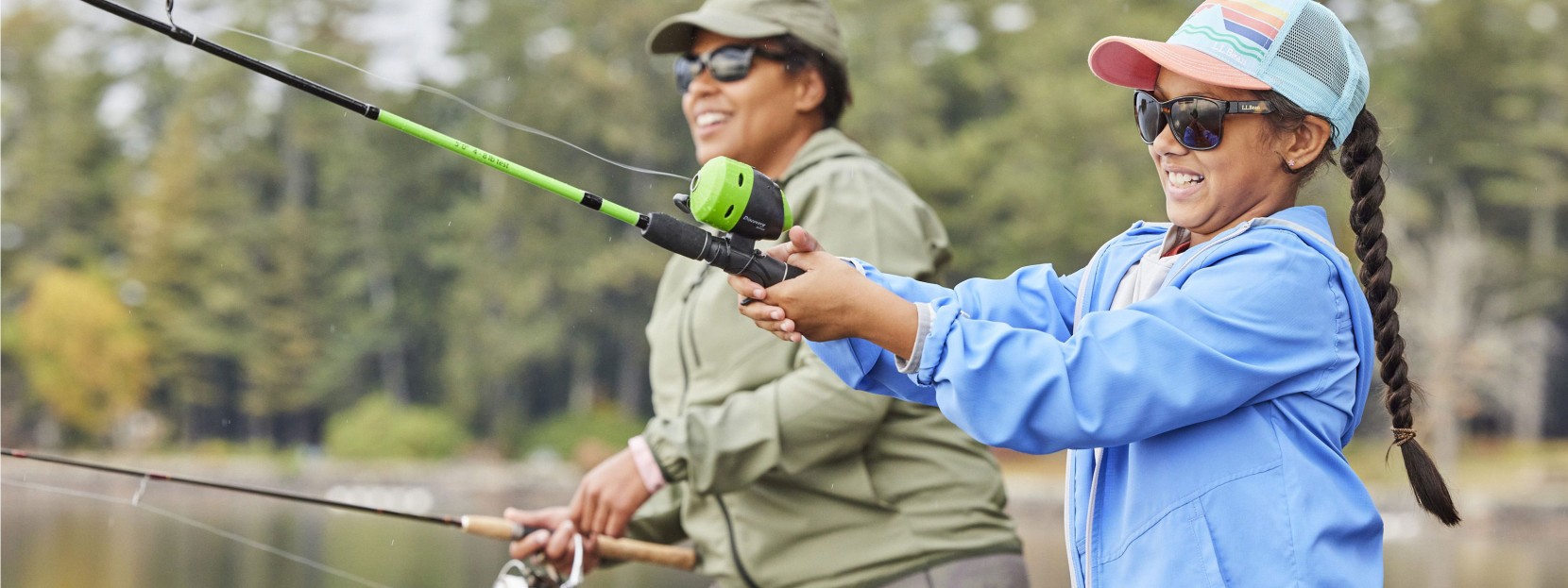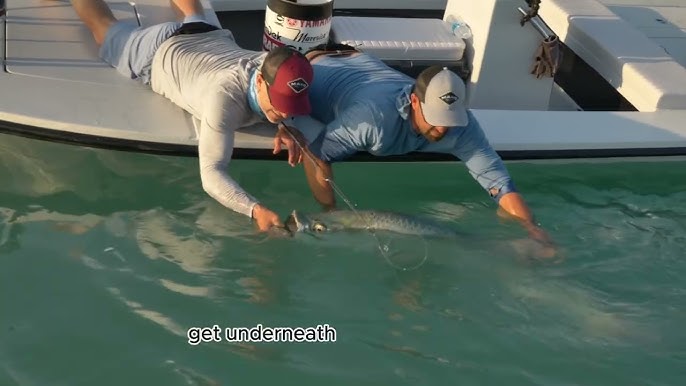Five Tips to Catch More Fish: Proven Techniques for Success
Fishing can be a relaxing and rewarding hobby. Yet, catching fish can sometimes be challenging.
Imagine spending a day at the lake, casting your line, and waiting patiently, only to go home empty-handed. Frustrating, right? Whether you are a beginner or an experienced angler, there are always ways to improve your fishing skills. By learning a few simple tips, you can increase your chances of success.
In this blog post, we will share five effective tips to help you catch more fish. These tips are easy to follow and can make a big difference in your fishing experience. So, grab your fishing gear and let’s get started!

Credit: mackslure.com
Choose The Right Bait
Choosing the right bait can make a big difference in your fishing success. The right bait attracts the right fish. Understanding the types of bait and their uses can help you catch more fish. Here are some tips to help you choose the right bait.
Live Bait Vs Artificial Bait
Live bait is natural and often more appealing to fish. It moves and smells like prey. Worms, minnows, and insects are common live baits. These can be very effective.
Artificial bait, on the other hand, mimics real bait. They come in many shapes, sizes, and colors. Lures, jigs, and spinners are examples. They are reusable and can be very versatile.
Decide based on your target fish and fishing conditions. Some fish prefer live bait. Others may go for the flash and movement of artificial bait.
Seasonal Bait Selection
Different seasons require different bait choices. During spring, fish are more active. They may go for worms or small fish. Summer heat can make fish sluggish. Cooler morning and evening times are best. Use insects or small crustaceans.
In fall, fish prepare for winter. They eat more to store energy. Larger bait like minnows or crayfish works well. Winter fishing is challenging. Fish move slower and eat less. Small, slow-moving bait is effective.
Adjust your bait choice with the seasons. This increases your chances of catching fish.

Credit: coloradooutdoorsmag.com
Understand Fish Behavior
To catch more fish, it is vital to understand their behavior. Knowing how fish feed and where they live can help you increase your chances of a good catch. This section will explore fish feeding patterns and habitat preferences.
Feeding Patterns
Fish have specific times when they are more active. Early morning and late afternoon are prime times. Fish feed more in these periods. Pay attention to the water temperature. Fish are more active in warmer waters. Use the right bait. Match your bait to what fish usually eat in the area. For instance, use worms for trout or small fish for bass. Fish also respond to different types of lures. Experiment with various lures to find what works best.
Habitat Preferences
Fish prefer certain environments. Some fish like shallow waters. Others prefer deeper areas. Observe the water’s features. Fish often gather around structures like rocks, logs, and plants. These areas provide food and shelter. Use a fish finder. This device helps locate fish in different water depths. It is useful in lakes and large rivers. Pay attention to the season. Fish habitats change with seasons. For example, in summer, fish might stay in cooler, deeper waters.
| Fish Type | Preferred Habitat |
|---|---|
| Bass | Near rocks and logs |
| Trout | Cold, clear streams |
| Catfish | Muddy waters and riverbeds |
Optimize Your Fishing Gear
To increase your chances of catching more fish, optimize your fishing gear. The right equipment can make a significant difference. Below are some essential tips to help you select the best gear for your fishing needs.
Rod And Reel Selection
Choosing the right rod and reel is crucial. Your choice depends on the type of fishing you plan to do. Here are some tips:
- Spinning Rods: Ideal for beginners. They are versatile and easy to use.
- Baitcasting Rods: Suitable for experienced anglers. They offer more control and power.
Match your rod with a compatible reel:
| Rod Type | Reel Type |
|---|---|
| Spinning Rod | Spinning Reel |
| Baitcasting Rod | Baitcasting Reel |
Line And Hook Choices
The right fishing line and hooks are just as important. Consider the following:
- Monofilament Line: Great for beginners. It is easy to handle and versatile.
- Braided Line: Stronger and more sensitive. Suitable for heavy cover.
- Fluorocarbon Line: Nearly invisible underwater. Ideal for clear water fishing.
For hooks, choose based on the fish you target:
- Circle Hooks: Reduce gut hooking. Best for catch-and-release.
- J-Hooks: Versatile and commonly used. Suitable for various fish species.
Ensure your gear matches the fish you aim to catch. Proper equipment increases success and enjoyment.

Credit: www.llbean.com
Master Casting Techniques
Catching more fish often comes down to perfecting your casting techniques. Whether you’re a beginner or an experienced angler, knowing how to cast effectively can make a huge difference. Here we will explore two essential casting methods: the overhead cast and the sidearm cast.
Overhead Cast
The overhead cast is a fundamental technique that every angler should master. This method is ideal for long-distance casting and is often used in open waters. To perform an overhead cast:
- Stand with your feet shoulder-width apart.
- Hold the rod with both hands, ensuring a firm grip.
- Bring the rod back over your shoulder.
- With a swift motion, cast the rod forward.
- Release the line at the peak of your forward motion.
Practice this technique to achieve greater accuracy and distance. Remember, the key is a smooth, controlled motion.
Sidearm Cast
The sidearm cast is perfect for casting under obstacles or in windy conditions. This technique allows for more control and precision. To execute a sidearm cast:
- Stand with your feet shoulder-width apart.
- Hold the rod horizontally at your side.
- Swing the rod back behind you, keeping it low.
- With a quick motion, swing the rod forward.
- Release the line as the rod reaches the target point.
Practice the sidearm cast to improve your accuracy in tight spots. This technique is especially useful for casting under low-hanging branches.
By mastering both the overhead and sidearm casts, you can adapt to various fishing environments and conditions. These casting techniques are essential skills that will help you catch more fish.
Scout The Perfect Fishing Spot
Finding the right fishing spot can make all the difference in your catch. Knowing where to fish is crucial. Let’s explore some tips to help you find the perfect spot.
Reading Water Conditions
One of the key aspects of finding a good fishing spot is understanding the water conditions. Fish are more likely to be found in areas with the right water temperature, oxygen levels, and food sources.
- Water Temperature: Different fish prefer different temperatures. Check the water temperature to target the right species.
- Oxygen Levels: Fish need oxygen. Look for areas with good water flow or near plants that produce oxygen.
- Food Sources: Fish are often found where their food is. Look for areas with insects, smaller fish, or other food sources.
Using Technology For Spotting Fish
Technology can be a great help in finding the best fishing spots. Tools like fish finders and GPS systems can give you an edge.
- Fish Finders: These devices use sonar to detect fish below your boat. They provide real-time data on fish location and depth.
- GPS Systems: Use GPS to mark successful fishing spots. Return to these spots in the future for better results.
Investing in these tools can improve your fishing experience. They help you locate fish faster and more accurately.
Adjust To Weather Conditions
Weather plays a crucial role in fishing. Fish behavior changes with the weather. Understanding these patterns can help you catch more fish. Below, find detailed tips for fishing in different weather conditions.
Fishing In Sunny Weather
Fishing in sunny weather can be both rewarding and challenging. Fish tend to seek cooler, shaded areas. They often hide under rocks, logs, or near deep waters. Using the right bait is essential in these conditions.
- Use smaller baits to mimic the natural food fish eat in summer.
- Fish early in the morning or late in the evening when the sun is not at its peak.
- Look for shaded areas or spots with underwater vegetation.
Remember, fish are more active during cooler parts of the day. Plan your fishing trip accordingly.
Fishing In Rainy Conditions
Rain can be great for fishing. Fish often become more active and move closer to the surface. The rain also makes it harder for fish to see you, increasing your chances of catching them.
| Tip | Description |
|---|---|
| Use brighter lures | Brighter lures are more visible in murky water. |
| Fish near inlets | Inlets bring fresh water and food, attracting fish. |
| Wear waterproof gear | Stay comfortable to focus on fishing. |
Pay attention to the weather forecast. Safety should always come first. Avoid fishing during thunderstorms or heavy rain. But a light drizzle can be perfect for a fruitful fishing session.
Practice Patience And Persistence
Patience and persistence are key to catching more fish. Fishing can be slow. You need to wait. Sometimes, for a long time. But good things come to those who wait. Do not give up easily. Stay calm. Keep trying. You will catch more fish with patience and persistence.
Staying Focused
It is easy to get distracted while fishing. Stay focused on your goal. Watch your line. Be ready for a bite. If you get distracted, you might miss a fish. Focus helps you catch more fish.
Dealing With Slow Days
Some days, fish do not bite. These are slow days. Do not get discouraged. Use this time to learn. Try different techniques. Change your bait. Move to a new spot. Slow days are part of fishing. Keep trying. Your patience will pay off.
Learn From Fellow Anglers
Fishing is more than just a solitary activity. Learning from fellow anglers can be a game-changer for your fishing success. By connecting with other fishing enthusiasts, you gain access to a wealth of knowledge and tips that you might not find elsewhere.
Joining Fishing Communities
Being part of a fishing community can significantly boost your skills. You can join local fishing clubs or online forums where anglers share their experiences and advice.
- Ask questions about fishing techniques.
- Share your own fishing stories and tips.
- Participate in group discussions about the best fishing spots.
Many fishing communities also organize group outings. These outings provide a great opportunity to see different techniques in action. Plus, it’s a fun way to meet new friends who share your passion.
Attending Workshops And Events
Workshops and fishing events are excellent places to learn. They often feature expert anglers who provide hands-on demonstrations and tips. Attending these events can help you stay updated on the latest fishing gear and techniques.
| Event | Date | Location |
|---|---|---|
| Fishing Gear Expo | June 15 | Miami |
| Annual Anglers Workshop | September 10 | Seattle |
| Lake Fishing Festival | November 5 | Chicago |
Many workshops also offer one-on-one coaching sessions. This personalized attention can be invaluable in fine-tuning your skills. Look for workshops that align with your interests, whether it’s fly fishing, saltwater fishing, or freshwater fishing.
By taking part in these communities and events, you can grow as an angler. Learn new techniques, discover new fishing spots, and enjoy the camaraderie of fellow fishing enthusiasts.
Frequently Asked Questions
How To Choose The Right Fishing Gear?
Selecting the right gear depends on the fish type. Research the fish species, their habitat, and behavior. Use appropriate rods, reels, and bait for the best results.
What Is The Best Time For Fishing?
Early morning and late evening are ideal times. Fish are more active during these periods. Weather and season also play important roles.
How To Find The Best Fishing Spots?
Look for areas with underwater structures like rocks and vegetation. Fish often gather around these spots. Local fishing reports can also provide useful information.
What Bait Works Best For Fishing?
Live bait like worms and minnows are effective. Artificial lures can also work well, depending on the fish species. Experiment to see what attracts the fish.
Conclusion
Catching more fish is about using the right tips and techniques. Practice often to improve your skills. Remember to choose the best bait and fishing spot. Stay patient and observe the water. Enjoy the process and the beauty of nature.
With these tips, your fishing trips will be more successful. Happy fishing!



